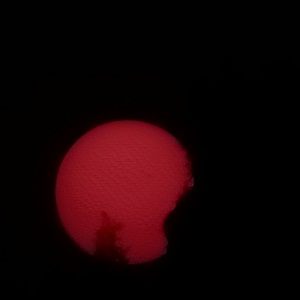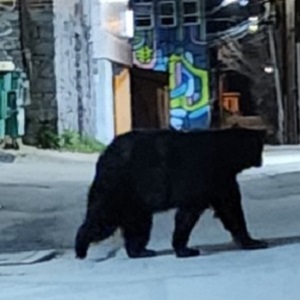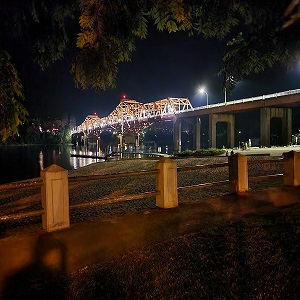- Details
- Written by: Rod Boyle
- Category: Ideas & Questions
- Hits: 344
Via Scientific American: https://www.scientificamerican.com/article/consciousness-might-hide-in-our-brains-electric-fields/
Now, I've read a few of these theories, so just add this to the heap. While I certainly subscribe to the view that the entirety of our experience isn't contained within our body or heads, I haven't time to chase after every theory of everything that our consciousness hides in other dimensions, in quantum states, in the earth's magnetosphere, etc, etc. But it is something to think about.
- Details
- Written by: Rod Boyle
- Category: Ideas & Questions
- Hits: 314
John Wheeler, American Theoretical Physicist, striving to create a unified theory of everything that was objectively the same to all observers. Which, as the article lays out, was no easy task.
Link: Quanta Magazine - John Wheeler, the Tear in Reality
Link: Bio on Wikipedia
- Details
- Written by: Rod Boyle
- Category: Ideas & Questions
- Hits: 324
To summarize, the internet as a communication tool for and by the people has been so largely displaced by algorithms and bots that it for all intents and purposes is dead. It's sole purposes is to create consumers out of users.
It is less a theory than a grim reality.
- Details
- Written by: Rod Boyle
- Category: Ideas & Questions
- Hits: 337
I'm up way too early and reading articles out of my depth on the internet.
A better-than-usual roundup of links for the day
#1 - "Omnipresent AI cameras will ensure good behavior, says Larry Ellison"
Yet another "well meaning" tech billionaire attempts to persuade the world that the future is a going to be made a better place with the help of his intrusive but well meaning technology. These people are clueless.
#2 - "Is accidentally stumbling across the unknown a key part of science?"
A little more of interest here that highlights how refreshing little we know about the world we live in, and how much there might yet to be learned...
Via aeon.co, a website that seems to get a lot of my visits. A long but worthwhile read. Mind you, I should revisit it later in the day when I've had a little more coffee, it's a little too early for all this yet...
- Details
- Written by: Rod Boyle
- Category: Ideas & Questions
- Hits: 513
Read the wiki here: https://en.wikipedia.org/wiki/Tired_light then head on over to Kansas University to read a refutation: https://www.k-state.edu/media/newsreleases/2024-09/Shamir-study-supports-Tired-Light-theory-challenges-Big-Bang.html.
Astrophysics could get interesting again soon...
Via Chat GPT:
The redshifting of distant stars and galaxies is typically explained by the expansion of the universe, which is a cornerstone of the Big Bang theory. However, alternative explanations have been proposed over the years to account for redshift without invoking the Big Bang. Here are some of the leading alternative theories:
1. Tired Light Hypothesis
- Overview: Proposed by Fritz Zwicky in 1929, the tired light hypothesis suggests that photons lose energy as they travel through space, leading to a redshift. This idea was put forward as an alternative to the expansion of the universe. According to this theory, the interaction between light and intergalactic matter or particles causes a gradual energy loss, stretching the wavelength of light, which is observed as redshift.
- Challenges: Tired light models have struggled to explain certain key observations. For example, tired light doesn't account for the time dilation seen in the light curves of distant supernovae or the uniformity of the cosmic microwave background radiation. Moreover, it would lead to image blurring over long distances, which we don't observe.
2. Gravitational Redshift
- Overview: Gravitational redshift is an effect predicted by general relativity, where light loses energy (and thus redshifts) as it escapes the gravitational field of a massive object. While gravitational redshift is a well-established phenomenon, it is generally localized near massive objects (e.g., black holes or galaxies) and isn't sufficient to explain the cosmological redshift of distant galaxies on its own.
- Challenges: Gravitational redshift does occur, but it is not seen to operate on a large enough scale to explain the uniform redshift of distant galaxies in all directions. It also doesn't explain the observed expansion of the universe or the relationship between redshift and distance (Hubble’s Law).
3. Quasi-Steady State Cosmology (QSSC)
- Overview: Developed by Fred Hoyle, Geoffrey Burbidge, and Jayant Narlikar, the quasi-steady state cosmology posits that the universe is in a steady state but undergoes periodic mini-expansions and contractions over long time scales. In this model, redshift is still tied to the expansion of space, but without a singular origin point like the Big Bang. The universe has no beginning or end in this theory, and matter is continuously created to maintain a constant average density.
- Challenges: QSSC faces difficulties in explaining the cosmic microwave background radiation and the observed distribution of galaxies over time, which aligns more with a universe that evolves from a hotter, denser state.
4. Plasma Cosmology
- Overview: Plasma cosmology, advocated by Hannes Alfvén and others, suggests that electromagnetic forces, rather than gravity alone, play a dominant role in shaping large-scale cosmic structures. In this model, redshifts might be caused by interactions between photons and intergalactic plasma. Proponents argue that large-scale currents in cosmic plasma could create redshifts through scattering and energy dissipation.
- Challenges: Plasma cosmology has not been widely accepted due to its inability to explain a variety of cosmological observations, such as the cosmic microwave background (CMB), galaxy formation, and the distribution of elements like hydrogen and helium.
5. Variable Speed of Light (VSL) Theories
- Overview: Some theorists, such as João Magueijo, have proposed that the speed of light may have been different in the past. In this view, changes in the speed of light could account for cosmological redshift without the need for an expanding universe. This would modify how we perceive distances and the redshifting of light over vast cosmic distances.
- Challenges: VSL theories are speculative and lack strong observational support. There are also concerns about their consistency with other physical laws, and they have yet to provide a coherent alternative to standard cosmology that explains all current data, including the CMB and galaxy formation.
6. Cosmological Redshift as an Illusion
- Overview: Some alternative models, such as those based on relativistic effects or non-Euclidean geometries of space-time, suggest that the redshift could be due to effects of observation rather than real motion or expansion. In these models, the redshift could be the result of light traveling through curved or complex space-time geometries.
- Challenges: While intriguing, these models often face difficulties in matching the precision of the Hubble Law and other key cosmological observations. The simplest interpretation of the data still supports the idea of an expanding universe.
Summary of Challenges for Non-Big Bang Theories:
- Most alternative theories face significant difficulties in explaining the full range of cosmological evidence, such as the cosmic microwave background radiation (CMB), the distribution of elements like hydrogen and helium, and the large-scale structure of the universe.
- The Big Bang model, despite its own challenges (e.g., dark matter and dark energy), remains the most successful at explaining the observed expansion of the universe, the CMB, and other key phenomena in cosmology.
Nevertheless, scientific models continue to evolve, and alternative theories provide valuable insights that push cosmology forward by challenging and refining mainstream thinking.





















